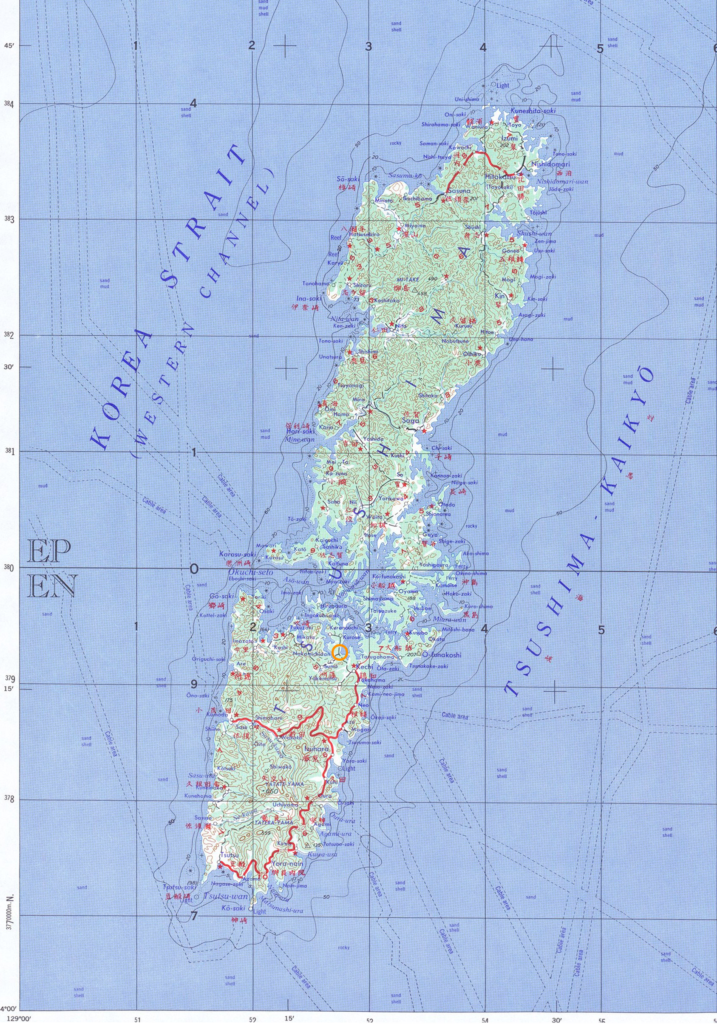An interactive map depicting the crash area of the 345th Bomb Group B-25 #44-31065 shot down over Tsushima on August 10, 1945 with the loss of the entire crew of five.
On August 10, 1945, four days before the end of hostilities, the 345th Bomb Group took off from their base on Ie Shima and headed for the Sea of Japan on a shipping sweep. The four squadrons took off at half hour intervals for their assigned search areas.
Having covered their search area and still carrying unexpended ordnance, the 501st Squadron split into three flights of three planes over Tsushima and searched for targets of opportunity along that island’s convoluted coastline as they headed back to base.

The second flight flew directly over a heavily camoflaged destroyer that was positioned in a cove and only noticed it once it had opened fire on them. The flight circled back to make single plane attacks from west to east. Lt. Earl. J. Wilkinson, the flight leader, was first over the destroyer and although he took several bursts of flak in his right wing and elevator, he scored at least one hit with his four 500-pound bombs. He made a successful ditching about an hour later in the South China Sea.
B-25 #44-31065, piloted by Lt. George H. Vincent, was second over the destroyer. His plane was hit in the left wing and engine as he reached the target and it crashed and exploded in the water one hundred yards beyond the destroyer. Surviving the crash and explosion was thought impossible by witnesses.
Lt. E. S. Phillips piloted the third plane over the target. Despite taking an A/A hit to the left rudder he stayed on course and scored two hits with 500-pound bombs that exploded on the deck of the destroyer, which was observed to sink.
Because there was no crash site map included with the Missing Air Crew Report or after-action report and there was no indication of coordinate system or map projection in the text, the latitude/longitude coordinates (which were recorded as degrees and minutes but no seconds) leave some doubt as to the exact location of the crash site. The map marker in the live map at the top of this post was positioned near likely terrain features close to the loss coordinates, plotted without transformation in the WGS-84 coordinate system. To suggest the lack of precise coordinates, a red bounding box has been drawn 30 seconds in each direction from 34° 17’N 129° 18’E.
Lost in the crash of 44-31065 were:
- Lt. George H. Vincent, pilot
- Lt. William J. Mulligan, Jr, copilot
- Lt. Diedrich J. Meinken, navigator-bombardier
- SSgt Bruce T. Duguid, radio operator-gunner
- SSgt Jack Weiner, engineer-gunner
After the war, the remains of the crew of 44-31065 were recovered from a burial site and were re-interred in various private and national cemeteries.
